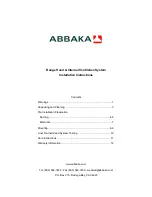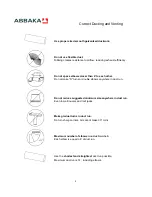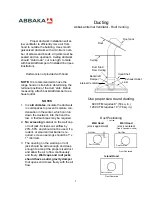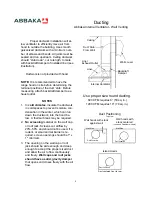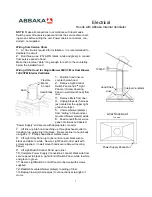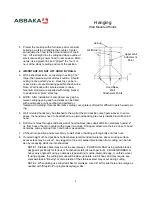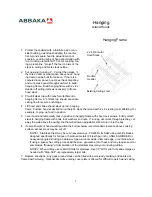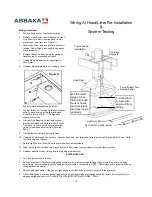
10
Wiring At the Hood:
1.
Position hood liner on counter below hood.
2.
Remove Light /Switch Control Panel and Light
Only Panel (or Screw Covering Panel in wall
mount hood) from liner (see Figure A).
3.
Feed conduit from service panel into knock out
labeled “Power Supply” and secure with appro-
priate connector.
4.
Remove filters from liner to simplify mating of
transition top to suspended ductwork.
5.
Unplug blower harness(es) at upper right of
each motor.
6.
Unscrew blower plates(s) from “ceiling” of liner
and set plate-mounted blower(s) aside.
7.
Lift liner into hood, reaching up through exhaust
outlet to transition top, guide liner into place.
Re-secure liner with # 8 x ½" Phillips head
sheet metal screws.
8.
Lift Light Only Panel up to liner and connect
black wire to black and white to white. Secure
Light Panel to liner wall with screws supplied.
(In wall mount hood secure Screw Covering
Panel.)
9.
Lift Light/Switch Control Panel up to liner.
10. Complete Power Supply Connections. Connect black wire from service panel to black in Light/Control Switch Panel, white
to white and green to green.
11. Secure Light/Switch Control Panel to liner wall with screws provided.
12. Tape joint between transition top to round ductwork from inside, running strips of metal foil tape vertically.
13. Reattach blowers to liner “ceiling” and re-plug blower harness(es).
SYSTEM TESTING
1.
Turn on electrical circuit to hood.
2.
Switch on ventilator. Rotate variable speed control knob clockwise through full range to see if motor speed is changing
accordingly. If motor speed is not changing as knob is rotated, check wiring. NOTE: Motor clicks on at highest speed and
runs progressively slower.
3.
Switch on halogen lights. If they do not light, check to see that bulbs are securely seated in their sockets.
4.
On untreated copper or brass hoods, fingerprints and resulting tarnish or oxidation should be removed with a quality, non-
abrasive polish and soft cloth - PLEASE FOLLOW INSTRUCTIONS ON NEXT PAGE.
Wiring At Hood/Liner Re-Installation
&
System Testing
Hood Shell
Typical Island
Installation
To Ceiling
Ductwork
2.
Lift bottom
edge of liner
flush with hood
bottom. Guide
duct into place
and tape inside.
vertically
1.
Cut section
to mate with
duct stub from
ceiling
B
C
A
Light /Switch Control Panel
Light Only Panel
Power Supply from
Service Panel
Figure A


